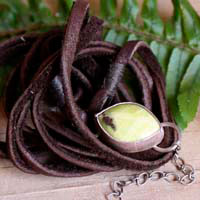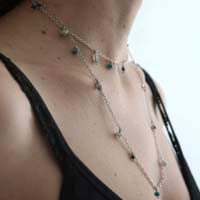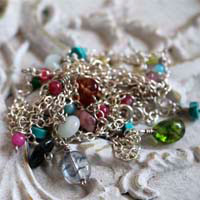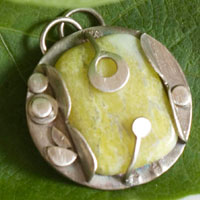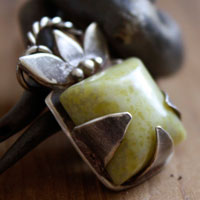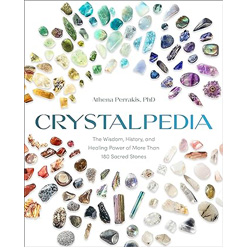- Jewelry
- Inspiration
- Our imagination
- Birthstones
- Celebrating with Eternal Flowers
- Druids and druidesses
- Flower meanings
- History, archeology jewelry
- History and healing properties of metals
- History and healing properties of stone
- Illumination jewelry
- Japanese symbols
- Maya calendar jewelry
- Stone color symbolism
- Stones catalogue
- Wedding anniversaries
- Searches a theme on the site
- Good Deals
- Paintings
- About
- Contact
JEWELRY
- Anklet
- Bracelets
- Brooches
- Cufflinks
- Earrings
- Pendants & Necklaces
- Rings
- Draw your jewelry
- How to clean your jewel
- Metal we used
INSPIRATION
- Our imagination
- Birthstones
- Celebrating with Eternal Flowers
- Druids and druidesses
- Flower meanings
- History, archeology jewelry
- History and healing properties of metals
- History and healing properties stones
- Illumination jewelry
- Japanese symbols
- Maya calendar jewelry
- Stone color symbolism
- Stones Catalogue
- Wedding anniversaries
- Searches a theme on the site

Jade: history, healing properties and lithotherapy
Jade properties

Jade, named "piedra de ijada" or "stone of the side" by 15th-century conquistadors, owes its name to its ancient reputation for healing kidney ailments and nephritic colic, as well as its legendary protective powers against malevolent spirits, according to Native American beliefs.
This stone, highly valued in decor and jewelry, actually encompasses three distinct but visually similar minerals: jadeite, nephrite, and kosmochlor.
In 1863, mineralogist Alexis Damour differentiated the two main types of jade: jadeite and nephrite. The term "jadeite" also derives from the Latin "lapis nephriticus" or "stone of the flank," a nod to Native American beliefs in its protective properties for internal organs.
Jade is thus divided into two primary types:
- Nephrite jade – Composed of calcium and magnesium silicate, nephrite is recognized for its hues ranging from creamy white to dark olive green, with occasional brown or black shades. Its surface often has a light, natural sheen that gives it a smooth, satiny appearance, making it highly valued in sculpture.
- Jadeite jade – Made of sodium and aluminum silicate, jadeite is prized for its extensive color variety, although green remains its iconic color. Its shades span from pure white to black, with variations in pink, blue-green (also known as Olmec jade), dark green (Mayan jade), blue, emerald green, lavender, red, orange, and even greenish-black. Jadeite is rarer than nephrite, denser, and often preferred in high-quality jewelry.
Buying jade requires caution due to the many imitations on the market. Serpentine, for instance, sometimes referred to as antigorite, is a less expensive and much softer stone that, once dyed, can resemble jade. Though often used in sculpture due to its malleability, it lacks both the hardness and the spiritual virtues attributed to true jade.
Physically, jade is an extremely hard stone, with a Mohs hardness of 6 to 7 for jadeite and 6 to 6.5 for nephrite, making it durable and suitable for daily wear. Its fibrous, granular structure gives jade exceptional resistance to impact, a feature that also contributed to its popularity as a material for tools and ceremonial objects in many ancient cultures.
Stories, legends and beliefs about the jade stone
Since the Neolithic era, jade has been used to craft weapons, ornamental objects, and ritual items, reflecting its spiritual as well as practical value. This stone is associated with wisdom, longevity, and prosperity in many ancient cultures.
The Egyptians revered jade, associating it with Maat, the goddess of justice, as its green color symbolized balance, truth, and harmony.
Among the Celts of Ireland, jade was linked to Brigit, the goddess of the feminine principle, fertility, and healing.
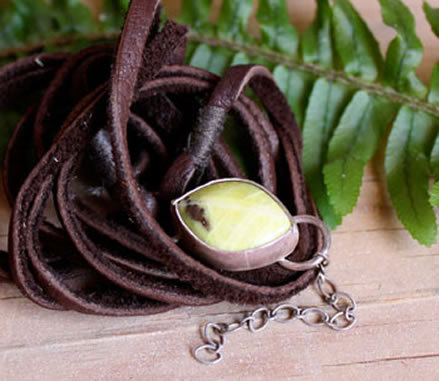
In ancient times, jade adorned homes with delicate carvings that symbolized protection, longevity, and prosperity, highlighting the aesthetic and symbolic value of this stone in daily life.
Jade also represented the Moirai in Greek mythology, the three goddesses of fate who governed the destinies of humans from birth to death, underscoring jade’s symbolic depth as a stone of destiny. The Greeks also recognized its therapeutic virtues: they used jade to soothe tired eyes by placing pieces of it on the eyelids and applied cleansing solutions to relieve eye infections. In elixir form, jade was used to treat snake or rodent bites as well as stomach pain, revealing its versatility in healing.
The Romans, in turn, associated jade with Bona Dea, goddess of the earth and fertility, further reinforcing the connection between this stone and nature, fertility, and abundance.
In China, jade, or "Yu," has held a central place in art and culture since ancient times. It was considered a symbol of purity, nobility, and immortality, embodying the quintessence of virtue. Jade symbolized the absolute power of the emperor: he held a jade scepter, while the five principal princes each possessed a jade tablet they were required to return annually to the emperor. This ritual allowed the emperor to decide whether to maintain their status.
According to Chinese mythology, jade was even perceived as the dried semen of dragons, imbuing it with an aura of divinity and cosmic power. The stone was so sacred that its use in medicine was strictly regulated, and any damage inflicted upon a jade object could be punishable by death.
In funerary rituals, a jade cicada was placed in the mouth of the deceased, symbolizing eternal life and resurrection. Jade was used to preserve the yin energies, thus preventing the body’s decomposition and ensuring a favorable reincarnation.
Jade was also a symbol of love and marital happiness, connected with the goddess Guan-Yin, embodiment of mercy, compassion, and unconditional love. Traditionally, a piece of jade carved into a butterfly was offered to the bride-to-be during engagement, recalling a legend in which a young man, while chasing a colorful butterfly, entered the gardens of a wealthy mandarin. Instead of being punished for his intrusion, he met the mandarin’s daughter and eventually married her. This ritual perpetuates the symbol of joyful love and conjugal happiness.
Chinese wedding ceremonies also honor jade: newlyweds drink from a jade cup shaped like a rooster, symbolizing fidelity. This tradition draws inspiration from a touching legend in which a white rooster is said to have sacrificed itself to remain alongside its beloved mistress.
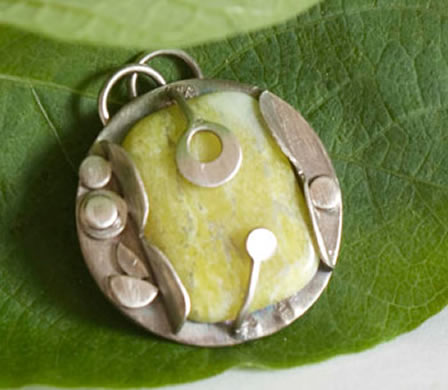
For Pre-Hispanic peoples, especially the Maya, jade was more valuable than gold, symbolizing creation and the essence of life. When Cortés asked Moctezuma to surrender his treasures, hoping for vast amounts of gold, Moctezuma offered him jade instead, considering it priceless.
In the tribes of Mexico, Central America, and South America, jade was also closely associated with water, and jade offerings were regularly cast into sacred wells or cenotes to invoke water spirits. This precious stone was frequently used to create masks and ritual objects, embodying a sacred connection with natural elements and spiritual practices.
The Aztecs linked jade to Chalchiuhtlicue, the goddess of water and protector of children, whose name means "she of the jade skirt." The stone was also dedicated to Coatlicue, the goddess of life and death, known as the "serpent skirt," underscoring jade’s rich symbolism within their pantheon.
The Maori people of New Zealand also regarded jade as sacred, particularly in the form of nephrite, which was associated with water and the goddess Hine-nui-te-po, the great lady of night and death. One of the most iconic Maori artifacts is the Hei-tiki, a pendant often carved from jade, representing a mythical ancestor. The Maori wore it around their neck to merge their mana, or spiritual energy, with that of their ancestors, thus strengthening their connection with their lineage.
Mines:
For the nephrite jade, China, Russia, New Zealand, Canada.
For the jadeite jade, Guatemala, Kazakhstan, Myanmar, Kosmochlor (imperial jade).
Healing properties and benefits of the jade
During the long history of humanity, different societies have attributed to jade a wide range of properties, virtues, and interpretations of a curative nature. The elements presented here are part of a cultural and historical perspective, intended to highlight the symbolic relationship that has developed between this stone and human civilizations over the centuries. As with the stones previously discussed, these associations belong to a descriptive and interpretative reading, rooted in ancient traditions and historical uses. They do not constitute medical or therapeutic advice, nor do they reflect personal beliefs.
- In certain traditions, jade is evoked for its symbolic connection with the strengthening of the heart, the kidneys, and the body’s natural defenses. It is thus associated with the idea of overall support for vitality, physical resilience, and the balance of essential functions, reflecting an ancient vision of health understood as harmony between the organs.
- Jade is also mentioned for qualities traditionally described as purifying, particularly in relation to the blood. It is symbolically associated with the stimulation of the spleen, the kidneys, and the adrenal glands, contributing to improved circulation and internal balance. This purifying function is often linked to notions of regeneration and cellular renewal, which are prominent in ancient representations of jade.
- In several cultures, jade is associated with longevity and fertility, especially male fertility. It is sometimes described as a stone connected to sexual vitality and creative energy, embodying continuity, life transmission, and renewal. These interpretations belong to an ancient symbolism of jade as a stone of prosperity and permanence.
- Jade is also mentioned, in certain traditional readings, for its symbolic link to the eyes and vision. It is then associated with visual clarity and the easing of eye fatigue, echoing its symbolism of lucidity, balance, and a measured perception of the world.
- Associated with the element of water in various symbolic systems, jade is frequently linked to hormonal balance and natural cycles. It holds a particular place in feminine traditions, where it is evoked to accompany the menstrual cycle, support regularity, and soothe associated discomforts, reflecting a broader search for bodily harmony and fluidity.
- On an emotional level, jade is often associated with the calming of the nervous system and the regulation of inner rhythms. It is evoked for its symbolic role in fostering peace of mind, emotional release, and stress management, helping to navigate anxiety with greater steadiness and gentleness.
- In some traditions, jade is also linked to the easing of physical discomfort, particularly joint pain. It is sometimes associated with the hips and lower back, key areas of bodily support, and evoked for its warming and relaxing symbolism, within a holistic approach to physical comfort.
- Jade is further mentioned for its symbolic association with resilience in the face of internal imbalances, including infections. It is notably evoked in relation to cystitis and genitourinary discomforts, in coherence with its ancient association with the kidneys and elimination functions, reinforcing the idea of overall well-being.
- Beyond its physical dimensions, jade occupies a central place in the value systems of many cultures. As a symbol of charity, justice, modesty, courage, and wisdom, it embodies an inner strength grounded in balance and constancy. It is thus perceived as a symbolic guide fostering reflection, integrity, and emotional stability.
- In meditative practices, jade is frequently used as a grounding stone. It is associated with the harmonization of inner energies and deep recentring, encouraging compassion, tolerance, and a balanced attitude in human relationships.
- Finally, in certain traditions of symbolic protection, jade is evoked as a stone of preservation and serenity. It is associated with the distancing of influences perceived as negative and with the establishment of a state of inner peace. This symbolism is often accompanied by associations with luck, prosperity, and favorable opportunities, reinforcing jade’s image as a benevolent and enduring stone through time.
 Please note that all healing properties attributed to stones come from ancient traditions and various cultural sources. This information is provided for informational purposes only and does not constitute medical advice. In case of any health concerns, it is recommended to consult a qualified professional.
Please note that all healing properties attributed to stones come from ancient traditions and various cultural sources. This information is provided for informational purposes only and does not constitute medical advice. In case of any health concerns, it is recommended to consult a qualified professional.
Jade jewelry samples
To learn more about litotherapy, we recommend you the following books:

